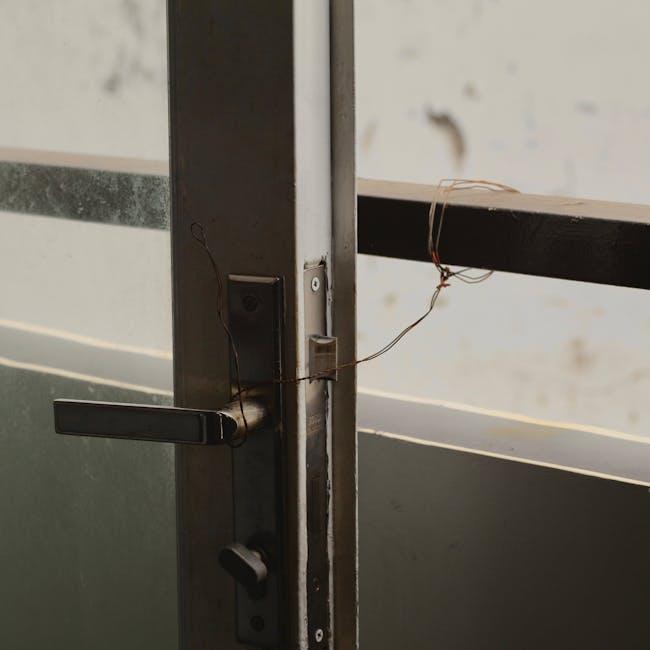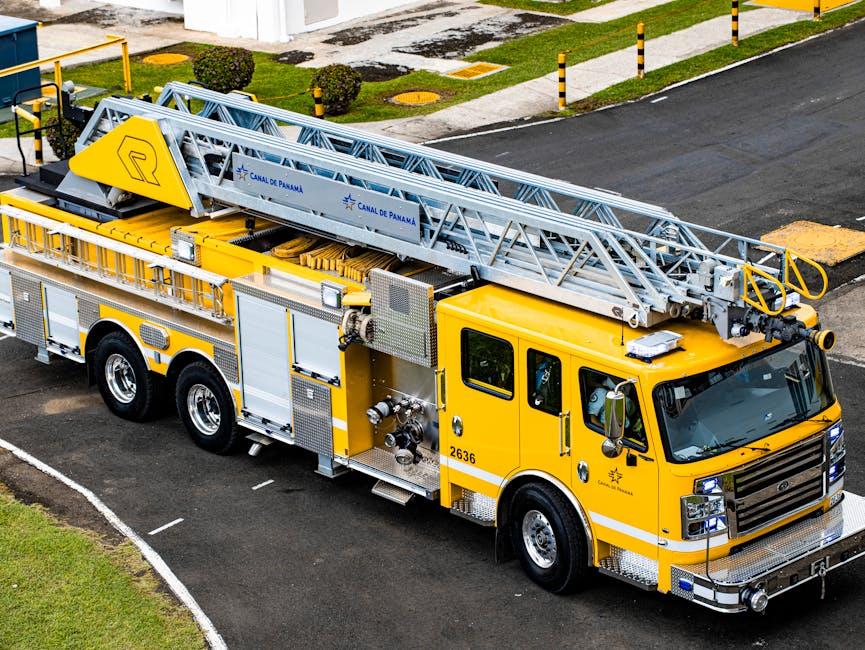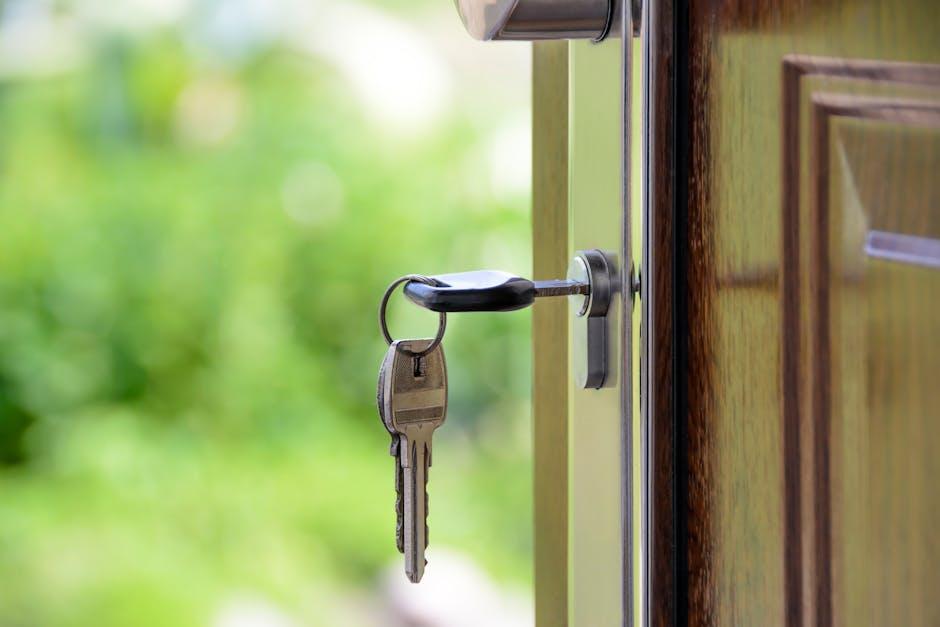In moments of panic, when a simple twist or key turn can mean the difference between safety and frustration, timing becomes everything. Lock emergencies don’t just test our patience-they challenge our sense of urgency and decision-making. Whether it’s a child locked inside a room, a crucial door jammed at a wrong moment, or a security system gone awry, the seconds ticking by can shape outcomes in profound ways. Understanding why timing matters in lock emergencies isn’t just about quick fixes; it’s about recognizing the delicate balance between immediate action and thoughtful response, ensuring safety and security harmonize when it matters most.
Table of Contents
- Understanding the Critical Window in Lock Emergencies
- How Delays Impact Security and Safety Outcomes
- The Role of Quick Decision Making in Minimizing Damage
- Effective Communication Strategies During Lock Crisis
- Best Practices for Fast and Reliable Locksmith Response
- Q&A
- Future Outlook

Understanding the Critical Window in Lock Emergencies
In lock emergencies, every second counts. The initial moments following the predicament are crucial because the condition of the lock and the security environment can change rapidly. Delays can lead to complications such as damaged locking mechanisms or heightened security risks. Understanding this “critical window” allows both users and professionals to respond with precision, preventing unnecessary damage and ensuring faster resolutions.
Key factors that influence this time-sensitive period include:
- Type of lock involved (mechanical, electronic, biometric)
- Environmental conditions (weather, lighting, accessibility)
- Potential security threats or safety hazards
- Availability of specialized tools and expertise
| Time Frame | Risk Level | Recommended Action |
|---|---|---|
| 0-15 minutes | Low | Assess & attempt non-invasive unlock |
| 15-30 minutes | Medium | Consult professional locksmith |
| 30+ minutes | High | Consider emergency services or lock replacement |

How Delays Impact Security and Safety Outcomes
When lock emergencies aren’t addressed immediately, the ripple effects can extend far beyond mere inconvenience. Every minute of delay opens a window of vulnerability, where unauthorized access or criminal activity becomes more likely. In high-stakes situations such as office buildings, schools, or healthcare facilities, slow responses can compromise personal safety and critical data security alike. Even everyday incidents, like a jammed lock at home, can escalate risks, exposing families to potential dangers.
Consider the key consequences:
- Increased risk of burglary or unauthorized entry
- Delayed emergency evacuations in fire or threat situations
- Heightened anxiety and disruption for occupants awaiting resolution
- Potential legal and financial liabilities for property owners
| Time Delayed | Potential Security Risk | Safety Impact |
|---|---|---|
| 0-10 mins | Minimal | Safe evacuation possible |
| 10-30 mins | Moderate – increased chance of unauthorized access | Stress elevates, evacuation slower |
| 30+ mins | High – significant risk of break-ins or security breach | Safety compromised; emergency response hindered |

The Role of Quick Decision Making in Minimizing Damage
When faced with a lock emergency, hesitation can lead to escalating issues such as damage to the lock mechanism, the door, or even surrounding property. Acting swiftly reduces the time an unauthorized person might have to exploit the situation, thereby protecting your home or business from potential intruders. Quick decision making ensures that the necessary professional locksmith is contacted promptly, enabling them to arrive and assess the problem before it worsens. The importance of timing in these scenarios cannot be overstated, as the initial moments often determine the extent of repair needed and the overall security risk involved.
Additionally, rapid response helps limit inconvenience and downtime, particularly in commercial settings where access is critical to daily operations. The combination of fast action and skilled intervention can prevent costly replacements and extensive damage remediation. Consider these essential actions to minimize damage during a lock emergency:
- Immediate assessment: Quickly evaluate the severity of the issue to determine if emergency services or locksmith professionals are required.
- Avoid DIY fixes: Attempting improper unlocking methods often causes further damage.
- Secure the premises: Temporarily reinforce entry points to deter unauthorized access while waiting for help.
| Action | Impact on Damage | Time Sensitivity |
|---|---|---|
| Calling a Locksmith Immediately | Minimizes lock and door damage | Critical |
| Attempting Self-Repair | Significantly increases damage risk | High Risk |
| Temporary Securing | Reduces security risk | Important |

Effective Communication Strategies During Lock Crisis
In moments of a lock crisis, communicating promptly and clearly can be the difference between chaos and calm. The first response must be swift, ensuring everyone involved understands the situation immediately. Delayed messages can lead to confusion, increased anxiety, or even dangerous mistakes. Leveraging quick communication channels, such as instant messaging apps or pre-set emergency alerts, helps maintain a steady flow of information, reducing uncertainties and helping coordinate a faster resolution.
To optimize communication during these emergencies, consider implementing these strategies:
- Prioritize critical information: Deliver clear, concise updates that avoid overwhelming details.
- Establish a communication hierarchy: Assign spokespersons to manage information flow and avoid mixed messages.
- Use redundancy: Multiple communication methods ensure the message reaches all parties without delay.
- Practice drills: Regular rehearsals prepare everyone to respond efficiently and at the right moment.
| Timing Window | Communication Goal | Common Pitfall |
|---|---|---|
| 0-5 minutes | Alert immediately | Panic & misinformation |
| 5-15 minutes | Provide status updates | Too much technical jargon |
| 15+ minutes | Confirm resolution steps | Loss of attention/support |

Best Practices for Fast and Reliable Locksmith Response
When a lockout or security issue strikes, every second counts. Swift action not only minimizes inconvenience but also drastically reduces potential risks. To ensure lightning-fast assistance, it’s critical to partner with locksmiths who prioritize rapid dispatch and are familiar with your local area. Leveraging state-of-the-art tools and technology allows technicians to diagnose and resolve issues on the spot, restoring your peace of mind without delay.
Key habits for ensuring prompt locksmith service include:
- Maintaining up-to-date contact info for trusted locksmiths
- Choosing providers with a clear, guaranteed response time
- Confirming locksmith certifications and reliable customer reviews
- Understanding common lock systems to facilitate easier troubleshooting
| Response Factor | Impact on Service |
|---|---|
| Proximity to Location | Faster arrival time |
| Experience Level | Quick, accurate problem-solving |
| Availability | 24/7 readiness improves reliability |
| Communication | Clear instructions reduce wait |
Q&A
Q: Why is timing so crucial during lock emergencies?
A: Timing can mean the difference between a minor inconvenience and a major crisis. Quick response prevents prolonged lockouts, reduces stress, and can even avert potential dangers like being trapped in a locked space.
Q: How does delayed action affect the outcome of a lock emergency?
A: Delays often escalate the situation-what might have been a simple fix can become a complicated, costly affair. For example, a delayed locksmith call might lead to damage to the lock or door, increasing repair times and expenses.
Q: Are there specific times when lock emergencies are more critical?
A: Yes. Emergencies occurring during odd hours, such as late at night or early morning, heighten urgency because fewer professionals are available, and safety risks can increase. Rapid response is essential in these situations.
Q: Can proper timing reduce damage to locks during emergency interventions?
A: Absolutely. Skilled technicians who arrive promptly can often resolve issues with minimal damage. Prolonged tampering or failed attempts to unlock can worsen the lock’s condition, necessitating full replacements.
Q: How can individuals prepare to manage lock emergencies more effectively?
A: Preparation involves knowing reliable locksmith contacts, having spare keys accessible, and understanding basic lock mechanisms. Quick decision-making coupled with preparedness ensures timely and efficient handling of lock emergencies.
Q: Does timing impact emergency response costs?
A: Yes. Immediate assistance typically costs less because the problem can be solved quickly and with less complexity. Waiting too long might lead to after-hours fees, additional repairs, or replacements, driving up the total cost.
Q: What role does timing play in ensuring personal safety during lock emergencies?
A: Prompt action minimizes the time individuals are vulnerable-whether locked out in an unsafe area or trapped inside. Time-sensitive responses help prevent panic, reduce exposure to hazards, and ensure swift restoration of access.
Q: In summary, why should timing be a top priority during lock emergencies?
A: Because acting swiftly transforms a potentially stressful ordeal into a manageable event, safeguarding property, health, and peace of mind with minimal disruption and expense.
Future Outlook
In the dance between security and urgency, timing is the silent rhythm that can mean the difference between frustration and resolution. Lock emergencies don’t wait for the perfect moment, and neither should the response. Understanding why every second counts not only helps in managing the immediate challenge but also prepares us to act with clarity and calm when the unexpected strikes. After all, in the race against time, being prompt isn’t just smart-it’s essential.




